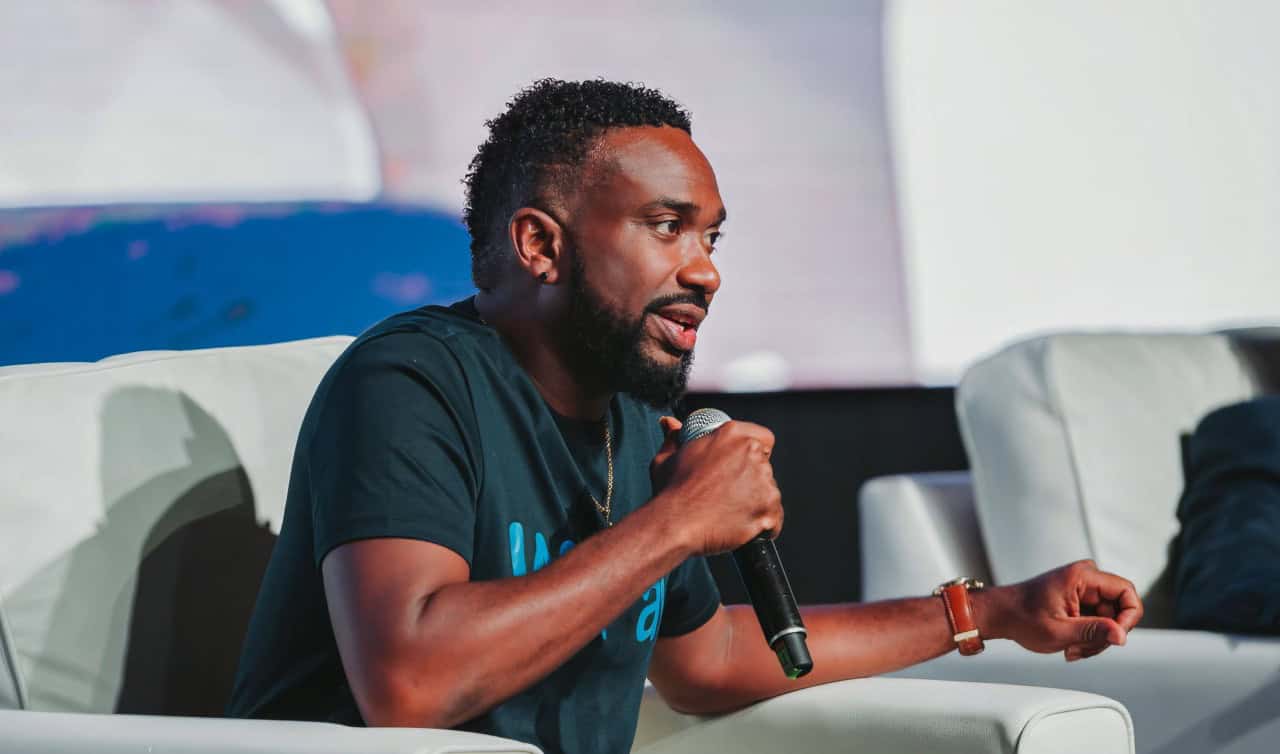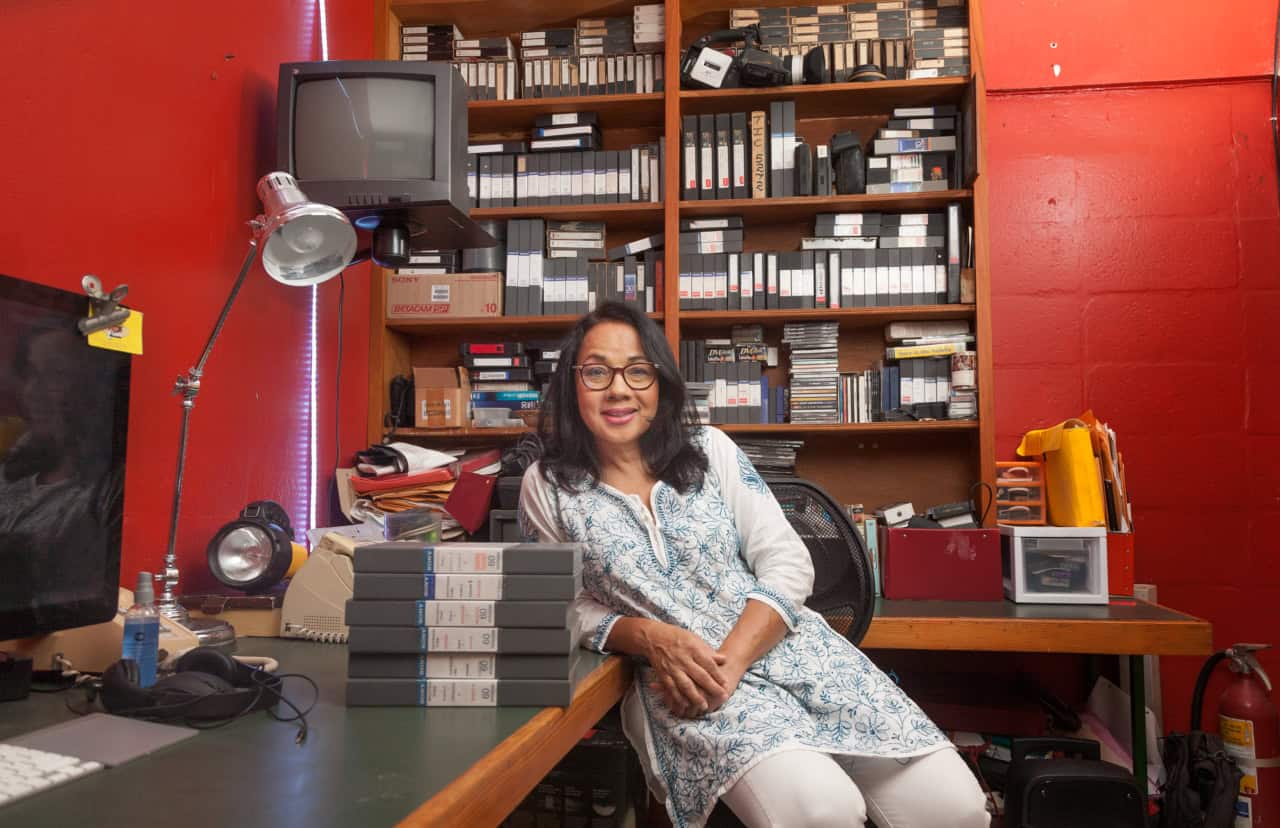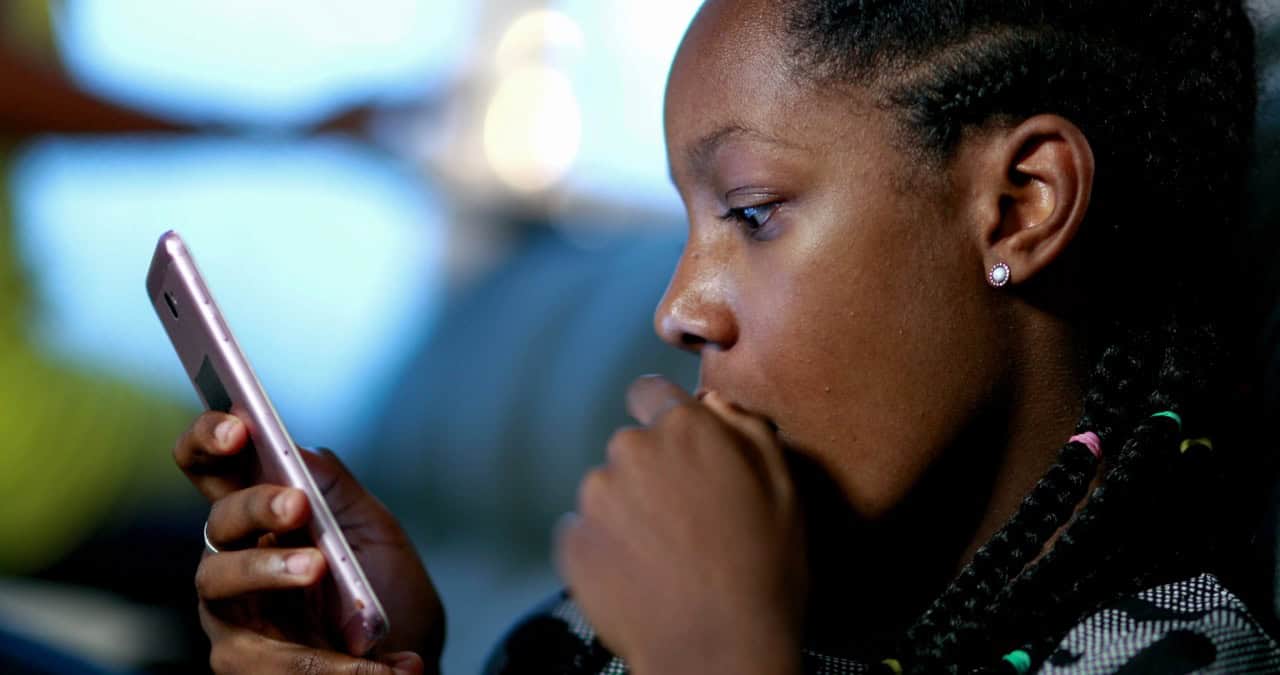
Above: The IADB launch tour of Arima. The VIPs wore lime green t-shirts. Photo by Mark Lyndersay.
BitDepth#1479 for October 07, 2024
Connected Arima, a project to transform the borough of Arima using technology into the country’s first smart city is an eminently good idea.
It’s a sensible approach to creating a locally relevant smart city. Pick one location with a mix of local features and challenges, deploy technology to meet citizen needs and learn from the experience before moving on to other city centres.
Arima is a good mix of urban occupation, dense business centre, agriculture on the fringes and a socially engaged population.
After seeing a press release showing workers dragging cable for the project, I reached out in May to Carina Cockburn, then Country Manager for the InterAmerican Development Bank (IDB), for an update on the project and to do a ground tour of the work underway.
An indirect response to that request came on September 27 for a launch event carded for the next day.
I’ve almost completely lost my taste for in-person events that cater to ego over information, but the invite specifically asked attendees to wear comfortable shoes for a city tour that would run for ninety minutes from 10:00am.
It was exactly what I’d been asking for, but unfortunately, that’s not quite what happened.
There’s a version of this column where I go on for five paragraphs about everything that went wrong with this launch, but that was just annoyance at how I ended up spending six hours on a hot, busy Saturday.
The launch was mostly speeches from government ministers that were short on digital comprehension and long on self-congratulation. The Ministry of Digitalisation? Really? From a member of Cabinet?

The advertised tour didn’t happen until two hours of speeches and other event distractions, then devolved into a Carnivalesque shuffle to the Arima Dial, with the DJ blasting soca and hyping an inaccurate link to a network that didn’t exist for most of the route to the dial.
The overall Arima smart town project is a collaboration of several government ministries, supported by the IDB. Connected Arima is being financed by both an IDB Technical Cooperation (grant) and an IDB Loan. The Technical Cooperation for pre-investment phases is valued at US$500,000, 90 per cent of which comes from the Korean Poverty Reduction Fund managed by the IDB, with the State responsible for “in-kind” investment of the remaining 10%.
The IDB Loan for US$32.5 million for the investment phases of the project, is the Urban Upgrading and Revitalisation Programme, of which US$15.5 million is allocated to the urban revitalization component, which includes Connected Arima.
When I asked Devindra Rampersad of the Digital Transformation Ministry why the project took three years to launch this first step, he immediately pointed to the Planning Minister, who’s evidently the lead on the project.
According to the IADB, the project went through the following phases since the 2021 announcement…
- Institutional development in the creation and structuring of the Ministry of Digital Transformation, a key partner.
- Public consultations to understand the perspectives and needs of key stakeholders.
- Diagnostic studies focused on socio-economic dynamics; mobility, digital connectivity leading to an Urban Regeneration Plan for downtown Arima that is currently being finalised with the Ministry of Housing and Urban Development.
- A pilot digital connectivity implementation at the Arima General Hospital in 2023.

“Public WiFi was a highly desired feature of a regenerated downtown in the views of the public at large as measured in a 2022 SMS survey financed by the IDB,” the bank said in response to questions.
“The anticipation is that it will attract more persons to the downtown and lengthen the time spent there by visitors. This is likely to positively impact patronage of downtown businesses.”
The public WiFi was officially activated on September 28 at the hospital, and it’s fast. A local ping registered 250 megabits of download speed and 126 for upload. A ping to a Caribbean server delivered 43.6 Mbps for download and 160 for upload.
That’s a reading close to the system backbone, which is hosted in the hospital’s server room on a network that had no load, but it’s a respectable speed profile for the Amplia-powered installation.
| Connected Devices | Total Download Bandwidth Usage (Gbps) | Total Upload Bandwidth Usage (Gbps) | Total Bandwidth Usage (Gbps) | |
| Saturday | 466 | 22.9 | 3.43 | 26.3 |
| Sunday | 451 | 27.9 | 2.39 | 30.3 |
| Monday (up to 11 am) | 329 | 11.3 | 0.761 | 12.1 |
The roll-out of the project will be in three phases, the first of which circles Royal Princes Park, the green space at the centre of Arima proper which includes the Velodrome, sporting facilities and other social centres before continuing a few blocks to the east.
The IDB explained that the network is designed to support 300 connections per access point and 28 access points have been deployed in the first phase, linked by 13 km of fibre, apparently laid by two technicians.
The connection to the customer targets 15 Mbps of peak average use per client with a latency average of 51ms.
“The service is not free,” the IDB explained.
“It is public, and it is being paid for by stakeholders in the Borough, most notably the Borough Corporation and the Arima General Hospital. The route is linked to a few streets and has not entered the residential or industrial parts of Arima; so there is little risk of adversely affecting existing service providers.
“The business community continues to keep their contracts with their normal providers in their shops. Minimising such conflicts is part of the design.”
The future of the project includes the establishment of “smart poles” which will carry surveillance cameras and wireless charging along with socially relevant features like an emergency call button and solar-powered lighting. There are plans for surveillance cameras along O’Meara Road.
The planned expansion of the Public WiFi network will include the eastern and southern boundaries of the park and side streets off Queen Street in the business area.
In a brief discussion after the formal event, Robin Rajack, the technical lead representing the bank explained that there are two years left on the loan period to continue expanding the project.
Correction: Since publication, the IDB has clarified details regarding the funding structure of the Connected Arima project. Those changes have been made in the body of the text, but not in the audio narration. The original text read as follows…
The overall Arima smart town project is a collaboration of several government ministries, supported by the IADB, which provided 90 per cent of the US$500m loan budgeted for the project (sourced from the Korean Poverty Reduction Fund) with the state responsible for “in-kind” investment of the rest. The Urban Upgrading and Revitalisation Program is funded by an IADB Loan of US$32.5m, of which US$15.5m is allocated to the urban revitalisation component which includes Connected Arima.
How a small technology change can reap huge dividends.
In her address at the Connected Arima launch, Carina Cockburn mentioned a Veo automated camera that the IDB had installed at the Arima North Secondary School field used by the Arima Aruacans Academy.
This is the letter that Lasana Liburd, programme director and co-founder of the Aruacans, sent to Cockburn about the effect of the camera on the team’s training regime.
Now that the school football season is in full swing, I believe the school, our parents and community can fully appreciate the benefit provided by the IDB’s grant of an AI-powered Veo camera to the Arima Aruacans Academy programme, which manages the Arima North Secondary football teams.
For our coaches, we have the necessary data to gauge how our team is doing and better instruct our players. Because we can tell that we made 50 passes more or less; for example, and in which areas of the field.
The goalkeeper coach can tell me, as he did yesterday, “Can you find me the clip of the St Augustine corner kick so I can show the goalkeeper how he isn’t timing his jumps properly?”
Our players are making requests for clips as soon as the games are over and I feel there is extra enthusiasm in their play for that same reason.
We can also use clips to promote upcoming games which are crucial for us since our programme relies on gate receipts to keep going. At the end of the season, this footage will also help create visual CVs for our players as they seek out scholarship or, in a few cases, professional opportunities abroad.
Already I’m in talks with a football official in Belgium who is interested in one of our 16-year-old players based on footage.
All that to say we are very grateful to have been included in your Arima project. It has given us a real boost.
You can search for the Arima North Secondary football page on Instagram or Facebook for some examples of how we use video clips with the Arima community (Most of our social media traffic is on Instagram).







































[…] Trinidad and Tobago – Connected Arima, a project to transform the borough of Arima using technology into the country’s first smart city is an eminently good idea… more […]
[…] TechNewsTT article, Arima’s first step toward becoming a smart city […]